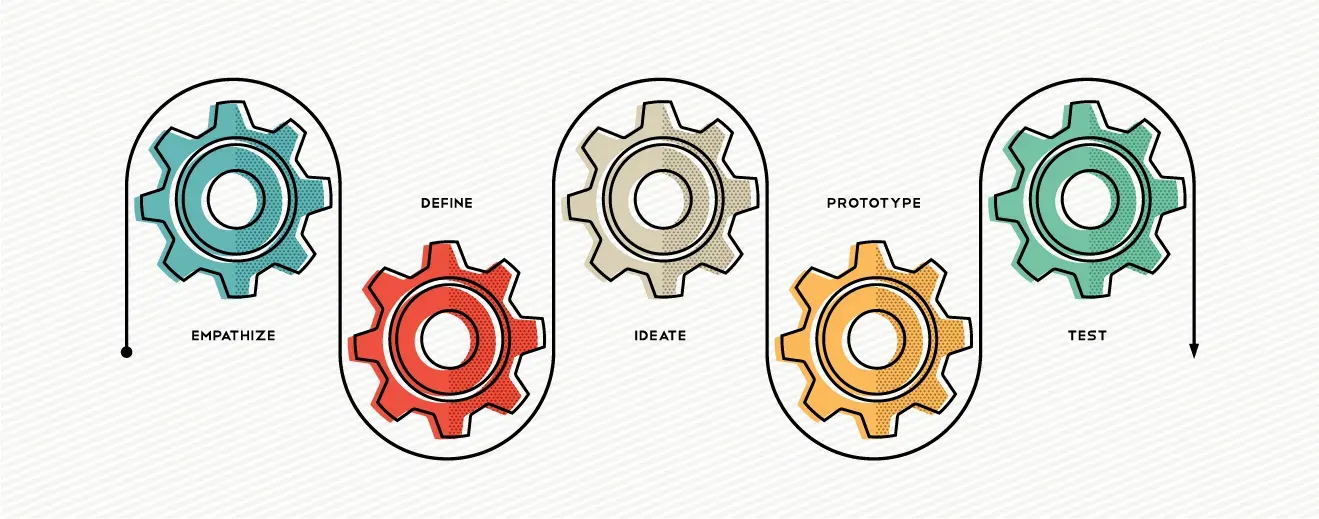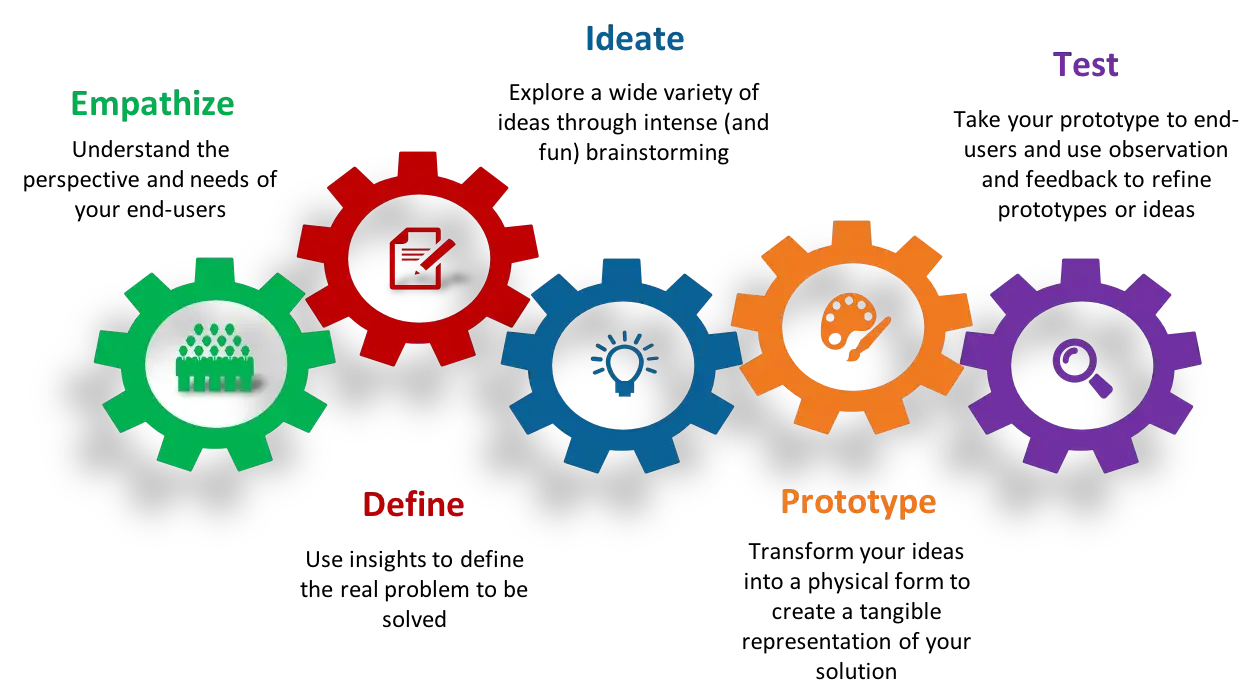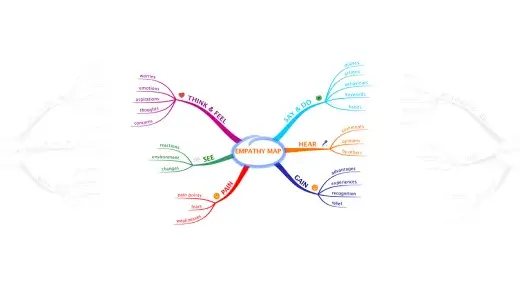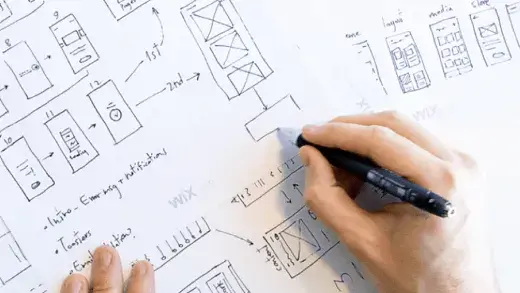What is Design Thinking?

What is
Design Thinking?
Different perspectives of each person give different statements about Design Thinking.
“Design is basic to all human activities - the placing and patterning of any act towards the desired goal constitutes a design process”
- Victor Papaneck
“Thinking like a designer can transform the way you approach the world when imagining and creating new solutions for the future: it’s about being aware of the world around you, believing that you play a role in shaping that world, and taking action toward a more desirable future. Design Thinking gives you faith in your creative abilities and a process to take action through when faced with a difficult challenge”.
- Gijs van Wulfen
In general, Design Thinking is a framework which helps people design solutions for a certain problem in the most effective way. This method is extremely useful in dealing with complex problems that are ambiguous or indeterminate by understanding the relevant demands of people and creating many ideas in brainstorming sessions. Besides, it also applies practical approaches with the prototyping and testing in a user-centric way. The five stages of the Design Thinking Process can be applied to tackle the complex problems that occur around us.
5 Stages in the Design Thinking Process

Stage 1: Empathize—Research Your Users' Needs
The first stage gives you an empathetic understanding of the problem you are trying to solve by setting aside your own perception of the world to be able to gain real insight into users and their needs, typically through user research. By that way, you can improve comprehension of what your users really think and do. Repeating the research process with many people having the same problem to discover personal stories or situations where things get difficult. The goal is to gather enough observations that you can actually begin to empathize with users by their views.
Stage 2: Define—State Your Users' Needs and Problems
Combine the results from the research, now you can understand the actual needs that people are trying to fulfill with certain activities. In pinpointing users’ needs, it is critical to underline the verbs or activities that people reveal when talking about their difficulties in finding out the opportunities for innovation.
Stage 3: Ideate—Challenge Assumptions and Create Ideas
Reach the third stage of design thinking, designers are ready to generate ideas. To identify innovative solutions for the problem statement you’ve discovered, let "Think outside the box” to sketch out different ideas. The point is not to get a perfect idea, but rather to come up with as many ideas as possible. Just sketch up your best ideas and show them to the people you are trying to help, so you can get their feedback.
Stage 4: Prototype—Start to Create Solutions
This is the experimental phase, the goal is to figure out what sections of your ideas work, and which do not.
Now reflect on what learned from the discussion about the different ideas. How does the idea fit in the actual context of people's lives? The best way is to get feedback internally and change it based on the comments. On the other hand, connect the dots, sketch up your final solution and go build a real prototype that just good enough to be tested.
Stage 5: Test—Try Your Solutions Out
At this final phase of the design thinking process, show a prototype with real customers and confirm that it achieves your goals. Has the users’ perspective improved? Does the new landing page on your site increase time or money spent?
Repeat the process until having a prototype that works and solves the real problem.
Now you are ready to show your product/service to the world.
Why Is Design Thinking so Important in Today’s World?
The rhythm of innovation and development leads every business to strive to refresh itself to achieve certain goals, which makes Design Thinking Process become undoubtedly indispensable.
Design Thinking is like a map and it focuses on the core problems. People need to follow this map to takes the challenge or problem and separate it into small pieces, and penetrate further into the core issue. Then, the most critical aspects can be seen clearly to devise into categories and give the best solutions. Design teams should use design thinking to handle ambiguous or indeterminate problems because the process observes these problems in user-centric ways.
By "Thinking Outside The Box", designers are able to have deep insight into a problem to solve. As a result, designers can carry out the appropriate research, create prototypes then test it to evaluate whether to meet users’ needs or not. More than just a process, design thinking offers a collection of hands-on methods to help you apply mindset in the best way.



